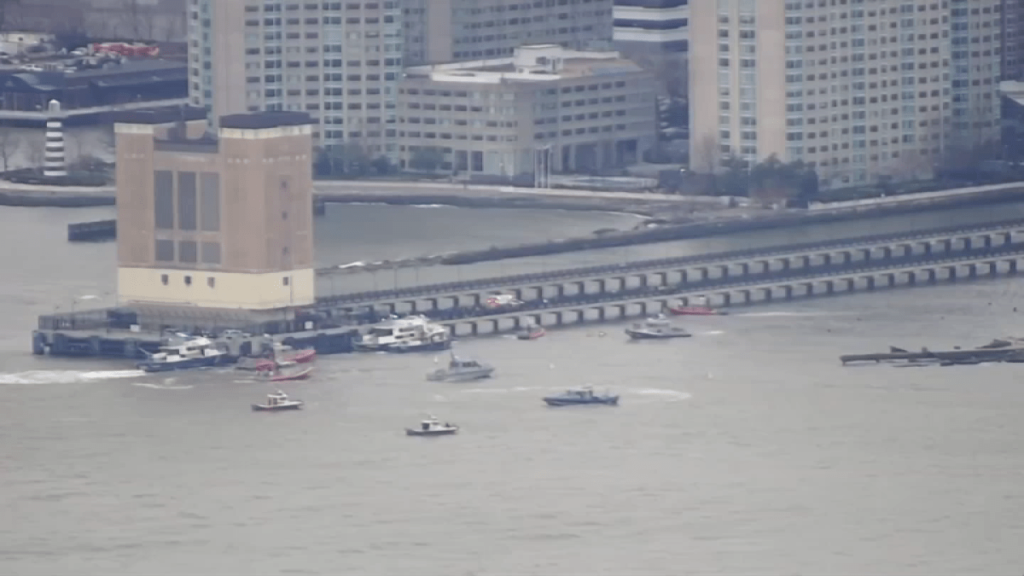There are renewed questions on aviation safety and regulations after a helicopter plunged into New York City’s Hudson River, killing all six people on board.
The crash happened just after 3 p.m. Thursday, April 10, 2025, during a tourist sightseeing flight. The victims include a family visiting from Spain, according to New York City officials.
“According to the manifest, it was one pilot, two adults, and three children,” New York City Police Commissioner Jessica Tisch said Thursday.
The names of the six people killed have not been publicly released.
Video on social media shows the helicopter plummeting from the sky and directly into the river. The cause is under investigation.
Arthur Alan Wolk, a jet pilot of more than 50 years in Philadelphia, said the images are “especially disturbing.”
“Remember that the rotor blades on a helicopter, the big ones on the top, are both the wing of the helicopter and the propellor of the helicopter,” Wolk said. “If you lose the main rotor blade, you’re doomed. The helicopter falls like a brick. That’s what I could see in the video today, that the main rotor blades literally cut the tail off of the helicopter.”
Wolk is also an aviation attorney. He said the particular model of the helicopter involved, a Bell 206 helicopter, has what is known as a “teetering rotor system.”
“That alone is not a comforting term. What happens is the rotor system, I’m talking about the rotor blades on the top, they move like that off a pivot in the middle,” he said. “If something goes wrong in what’s called in the track of those blades, they can cut off the tailbone. Believe me, in my years of litigating helicopter crash, it’s not unusual for something to go wrong in the track of those blades. That happens because of bad maintenance, bad sign, a little bit of both. Sometimes, an abrupt or violent maneuver can cause the rotor blades to go out of track.”
Wolk said the investigation into the cause of the crash will initially focus on maintenance and trying to piece as many parts of the helicopter together.
“I wish I could say there will be a change in the industry because of this crash. I doubt it. Most of the time, the investigators don’t go far enough to work a change. That’s unfortunate, and that’s why these crashes continue to happen,” he said.
When asked what he thinks needs to be a part of the conversation to produce a change in aviation safety, Wolk said it’s about the regulatory dynamic.
“In most instances, aircraft and helicopters are manufactured with the manufacturer having the authority to certify their own products. In other words, to say this product is safe and airworthy. The FAA does a very cursory regulatory review. Sometimes, no regulatory review. Unless that changes, the number of accidents aren’t going to change,” he said.
The investigation into the crash is being conducted by the FAA and National Transportation Safety Board. On “X”, the NTSB said it has launched a ‘go-team’, which should arrive on the grounds near Jersey City, New Jersey Thursday evening.
This article was originally published by a www.nbcphiladelphia.com . Read the Original article here. .

